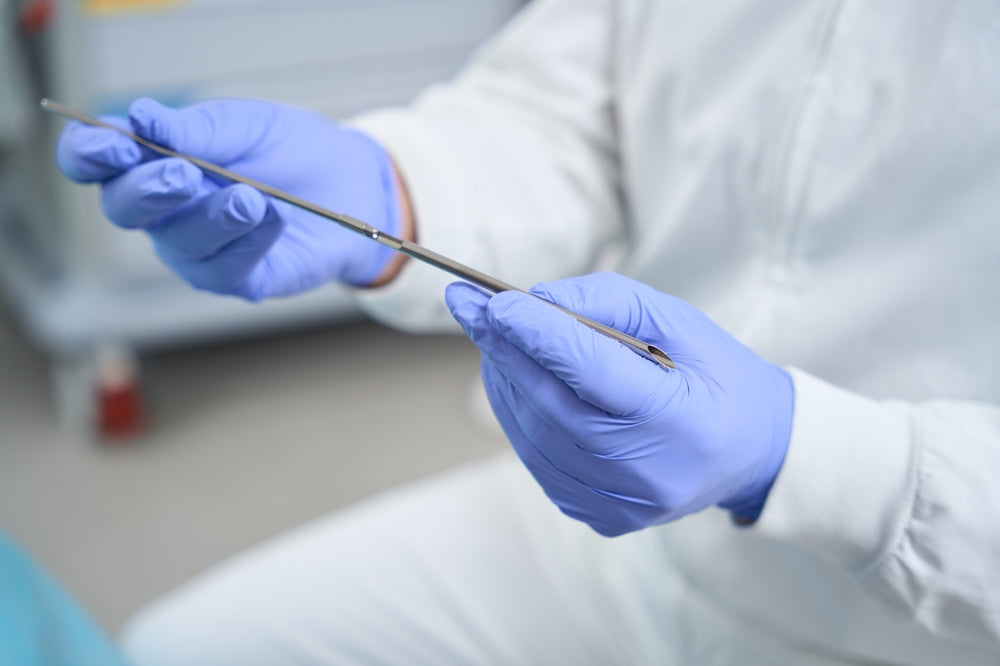
In Hormone Replacement Therapy (HRT), precision, safety, and efficiency are critical to successful outcomes. One essential component of any hormone pellet procedure is the trocar—a surgical instrument designed to introduce pellets beneath the skin with minimal tissue disruption. Choosing the right trocar for each procedure plays a vital role in treatment success, making it essential for healthcare providers to understand the types of trocars available and their applications in HRT.
Trocars are categorized based on the design of their tips, which influences how they interact with tissue during insertion. In HRT, the goal is to insert hormone pellets subcutaneously in a way that minimizes trauma, prevents complications, and ensures accurate placement. The most commonly used trocar tip types for HRT procedures include:
Blunt tip trocars
Bevel tip trocars
Diamond tip trocars
Pointed tip trocars
Each of these has specific advantages depending on patient anatomy, provider technique, and the nature of the hormone therapy being administered. Materials and structural design can also affect performance, as seen in differences amongsurgical tool materials.
Blunt tip trocars are designed to separate tissue rather than cut through it. This design reduces the risk of vascular or nerve damage, making them ideal for providers who prioritize safety and low complication rates. During hormone pellet insertion, blunt tips allow for gentle tissue dilation, which can help minimize post-procedure discomfort and reduce the chance of hematoma.
These trocars are often preferred for patients with thinner tissue or when the risk of bleeding needs to be minimized. Their design also allows for a more controlled insertion, which can be especially useful for newer practitioners or in high-volume clinics. In some surgical tray setups, blunt tip trocars serve as the foundational tool for hormone pellet placement.
Bevel tip trocars have an angled cutting surface that facilitates a smooth and directed entry through subcutaneous layers. The bevel creates a slit-like incision that is effective for precise pellet placement. This tip type balances cutting and control, making it an excellent choice for hormone pellet insertions requiring pinpoint accuracy.
Clinicians appreciate bevel tip trocars for their versatility and tactile feedback during insertion. This design can be particularly helpful when placing pellets in tighter anatomical areas or in patients with denser subdermal tissue. These decisions often tie into how providersselect the optimal trocar kit for each patient.
Diamond tip trocars are characterized by a four-sided, symmetrical point that offers a high degree of accuracy. This configuration creates a controlled and centered incision path, which reduces lateral movement and improves pellet placement consistency.
In HRT, diamond tip trocars are valued for their ability to pierce dense or fibrous tissue without excessive force. Their geometry minimizes trauma while maintaining sharpness and direction, which is especially beneficial for experienced providers performing high-precision procedures. Predictable placement can be especially useful when treating hormone deficiencies infemale patients.
Pointed tip trocars feature a sharp, triangular point designed to penetrate tissue quickly and cleanly. They are highly effective when speed is necessary or when working with patients who have a thicker subcutaneous layer. Pointed tips can provide swift access while still supporting accurate placement of hormone pellets.
Because of their sharp design, pointed tip trocars should be used with careful technique to avoid excessive depth or misplacement. However, when handled correctly, they can streamline the insertion process and improve procedural efficiency.
Selecting the correct trocar type for each HRT procedure affects not only the ease of insertion but also patient outcomes. The right tool can:
Minimize patient discomfort
Reduce the risk of bruising or bleeding
Improve the consistency of pellet placement
Enhance procedural speed and workflow
Support optimal hormone absorption and therapy effectiveness
Choosing the right design also supports broader goals related to thebenefits of hormone replacement therapy, including sustained hormone delivery and patient satisfaction.
Whether treating menopause, andropause, or other hormone deficiencies, HRT providers rely on precision tools to ensure safe and effective therapy. Trocars are central to that process. Choosing the right type—blunt, bevel, diamond, or pointed—can elevate the standard of care and minimize complications.
High-qualitytrocar kits designed for hormone pellet procedures support precision and consistency with features built for clinical performance. Efficient workflows that include proper disinfection and cleaning of instruments help ensure sterility and longevity.
Practices integrating HRT into their offerings benefit from clear procedural structure and training. Understanding how to add hormone therapy to your practice allows for a more seamless implementation that prioritizes safety and results.
These choices reflect not only clinical preferences but also the values of the provider. Thehistory and mission behind Trocar Supplies highlight the importance of consistent, high-quality instrumentation in delivering care that makes a difference.
Every HRT procedure is an opportunity to improve quality of life. With the right tools, providers can deliver consistent, safe, and impactful care.